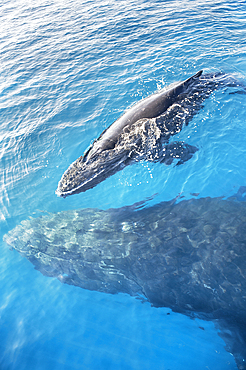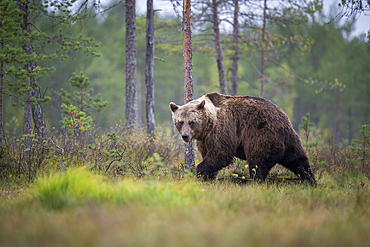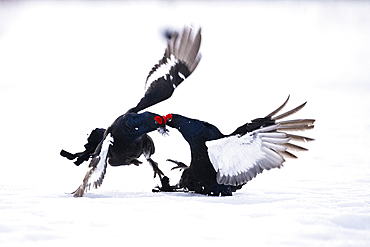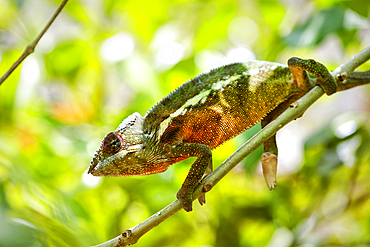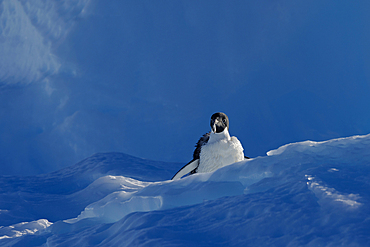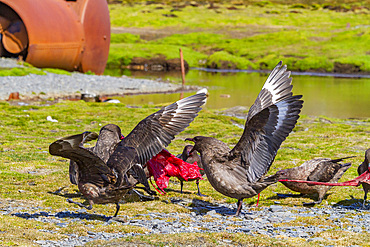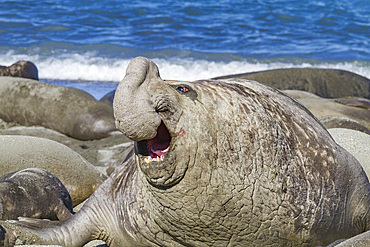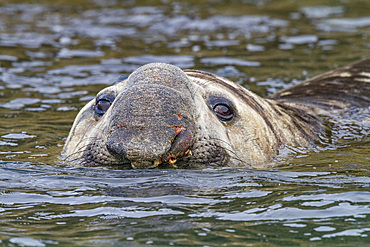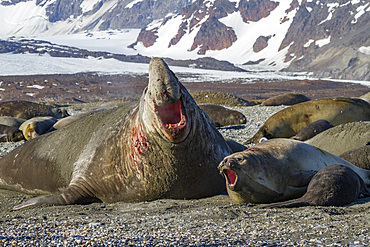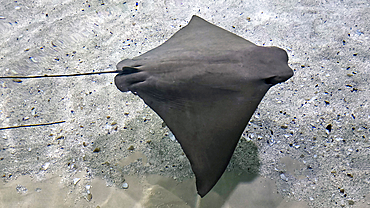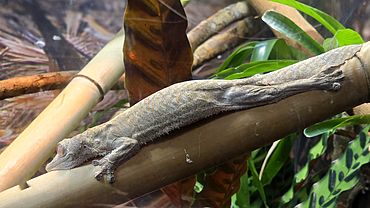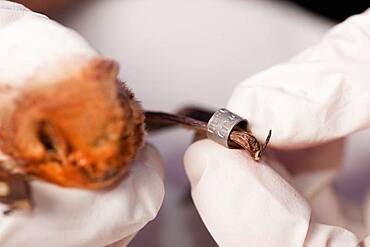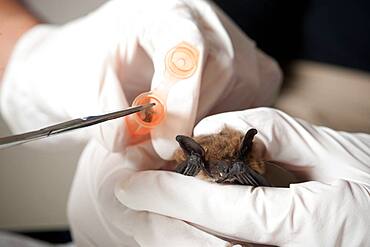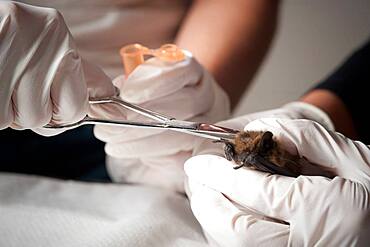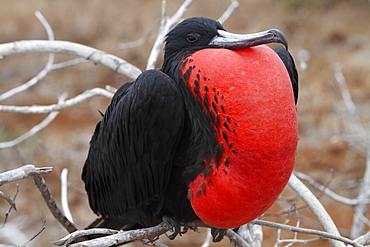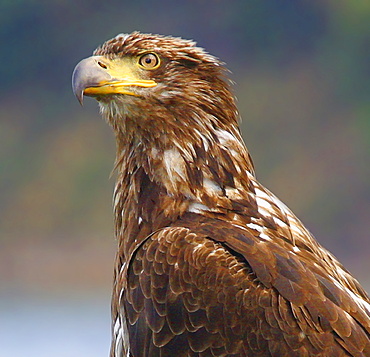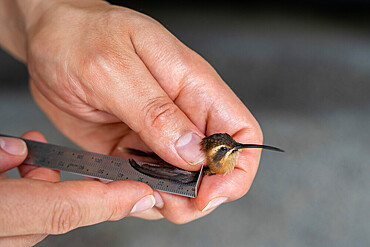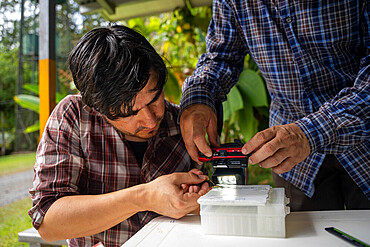Results
63 results found
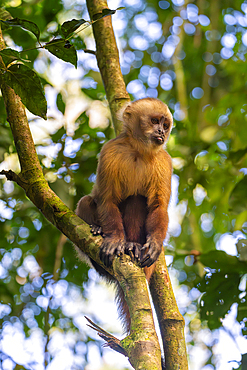
Brown capuchin monkey (Cebus apella) (Sapajus apella) on tree, Tambopata National Reserve, Puerto Maldonado, Tambopata Province, Madre de Dios, Peru, South America

Curious southern elephant seal (Mirounga leonina) weaner pup inspects the spotting scope at Gold Harbour, South Georgia, Polar Regions
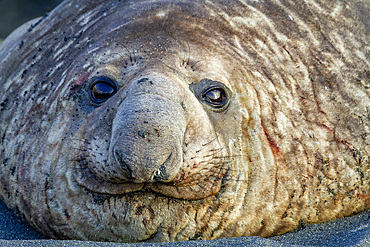
Southern elephant seal (Mirounga leonina) challenger bull head detail at Gold Harbour on South Georgia Island, Polar Regions
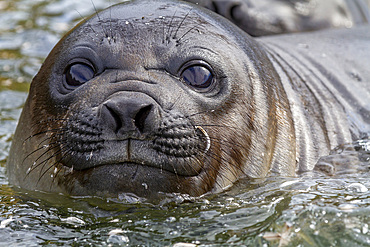
Southern elephant seal (Mirounga leonina) weaner pup head detail on the beach at Gold Harbour on South Georgia, Polar Regions
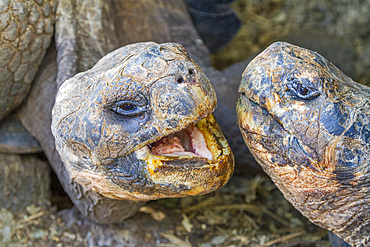
Captive Galapagos giant tortoise (Geochelone elephantopus) at the Charles Darwin Research Station, Galapagos, UNESCO World Heritage Site, Ecuador, South America

Adult Magellanic penguins (Spheniscus magellanicus) at breeding and molting site on Carcass Island, Falkland Islands, South America
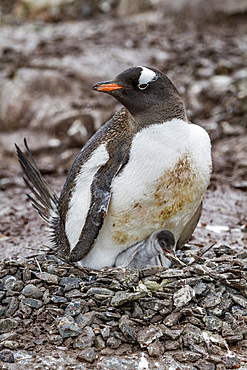
Gentoo penguin (Pygoscelis papua) adult with chick on Cuverville Island, Antarctica, Southern Ocean, Polar Regions

Chacma Baboons (Papio ursinus), two youngsters playing tug of war with one youngster's tail, Chobe National Park, Botswana
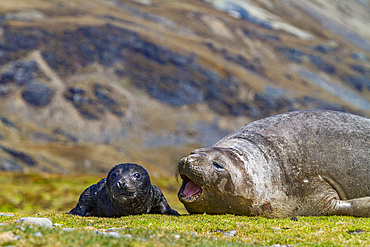
Female southern elephant seal (Mirounga leonina) with newborn pup on the beach in Stromness Bay, South Georgia Island
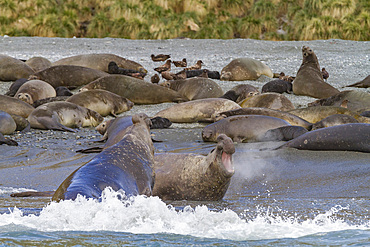
Adult bull southern elephant seals (Mirounga leonina) fighting for breeding grounds on South Georgia Island, Southern Ocean
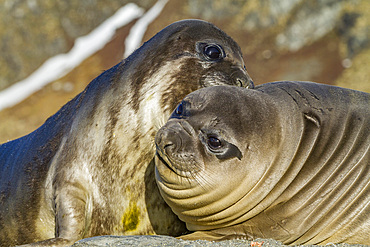
Male southern elephant seal (Mirounga leonina) pups mock fighting on South Georgia Island, Southern Ocean
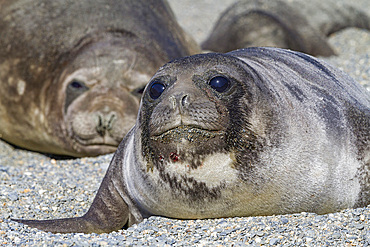
Southern elephant seal (Mirounga leonina) pup, called weaners once their mothers stop nursing, South Georgia Island, Southern Ocean
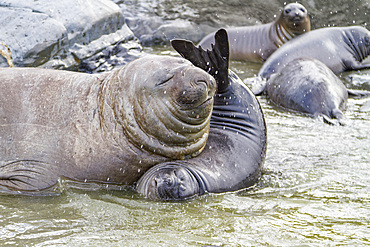
Young adult bull southern elephant seal (Mirounga leonina) holding young pup's head underwater trying to kill it, South Georgia Island, Southern Ocean

Female mantled howler monkey (Alouatta palliata) eating tree leaves in a north Pacific coast forest, Esperanza, Nosara, Guanacaste, Costa Rica

Atlantic Puffin (Fratercula arctica), on Skomer Island in July, a nature reserve off the coast of Pembrokeshire, Wales, United Kingdom, Europe
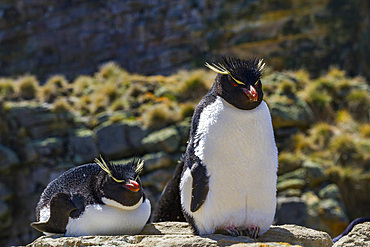
Adult rockhopper penguins (Eudyptes chrysocome chrysocome) at breeding and molting colony on New Island, Falkland Islands
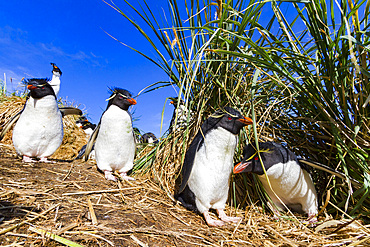
Adult rockhopper penguins (Eudyptes chrysocome chrysocome) at breeding and molting colony on New Island, Falkland Islands
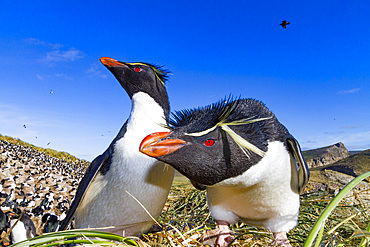
Adult rockhopper penguins (Eudyptes chrysocome chrysocome) at breeding and molting colony on New Island, Falkland Islands
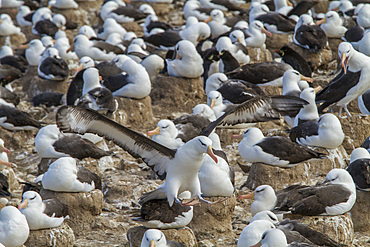
Black-browed albatross (Thalassarche melanophrys) breeding colony on Steeple Jason Island in the Falkland Islands
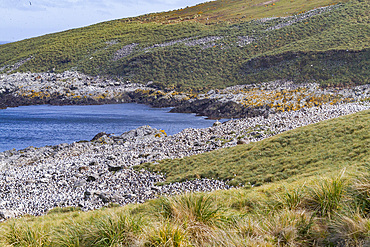
Black-browed albatross (Thalassarche melanophrys) breeding colony on Steeple Jason Island in the Falkland Islands
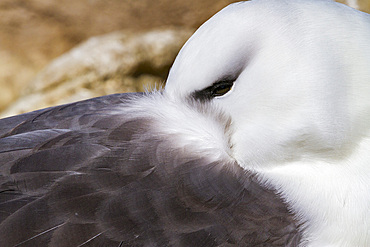
Black-browed albatross (Thalassarche melanophrys) close-up at breeding colony on Carcass Island in the Falkland Islands
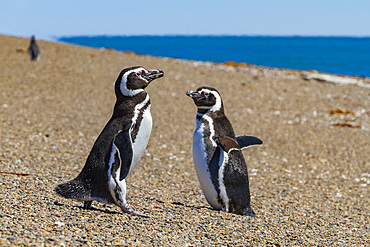
Magellanic penguins (Spheniscus magellanicus) at a breeding and molting site in Estancia San Lorenzo, Argentina
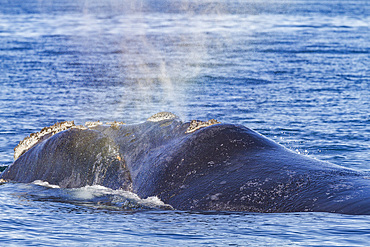
Southern right whale (Eubalaena australis) adult surfacing near Puerto Pyramides, Peninsula Valdez, Argentina
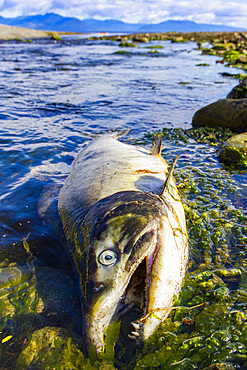
Dead and dying pink salmon (Oncorhynchus gorbuscha) gathering after the spawn just outside of Sitka, Alaska, United States of America
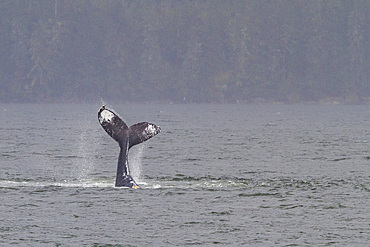
Adult humpback whale (Megaptera novaeangliae) tail throw among feeding whales in Southeast Alaska, United States of America
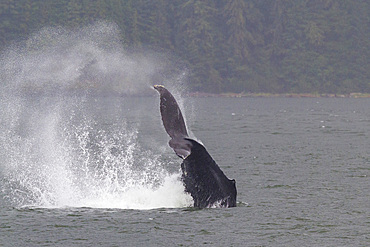
Adult humpback whale (Megaptera novaeangliae) tail throw among feeding whales in Southeast Alaska, United States of America
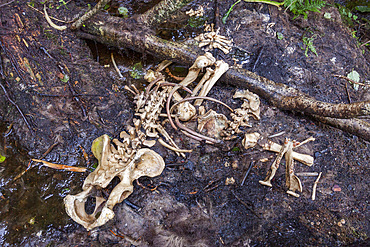
Adult brown bear (Ursus arctos) skeletal remains on Chichagof Island, Alaska, United States of America
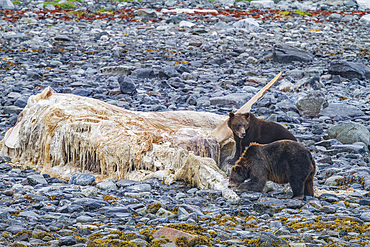
Adult brown bears (Ursus arctos) feeding on humpback whale carcass, Scidmore Cut, Glacier Bay National Park, Alaska, United States of America
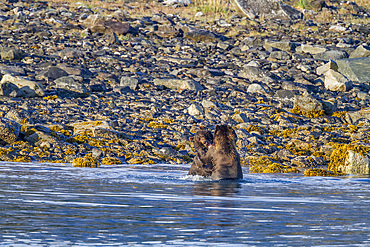
Adult brown bear pair (Ursus arctos) mock-fighting at Scidmore Cut in Glacier Bay National Park, Alaska, United States of America

Adult brown bears (Ursus arctos) foraging for salmon at the Brooks River, Katmai National Park, Alaska, United States of America
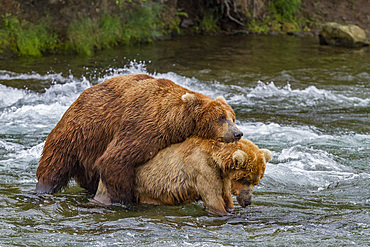
Adult brown bears (Ursus arctos) courtship behaviour, Brooks River, Katmai National Park near Bristol Bay, Alaska, United States of America
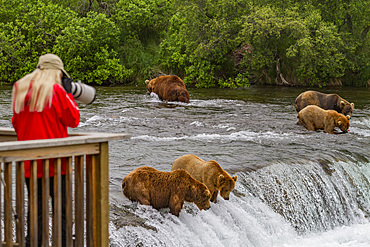
View from Park Service platform where adult brown bears (Ursus arctos) forage for salmon, Katmai National Park, Alaska, United States of America
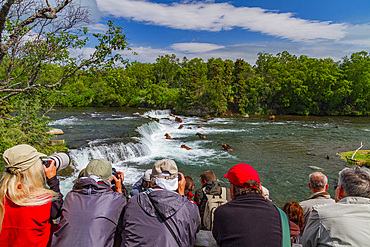
View from Park Service platform where adult brown bears (Ursus arctos) forage for salmon, Katmai National Park, Alaska, United States of America
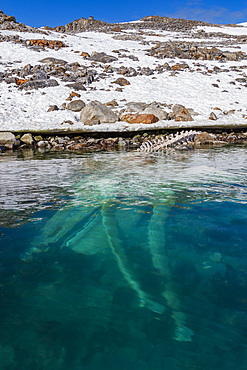
Adult fin whale (Balaenoptera physalus) carcass in Holmabukta off the northwest of the Svalbard Archipelago, Norway

Adult common (northern) minke whale (Balaenoptera acutorostrata) sub-surface feeding in the Svalbard Archipelago, Norway
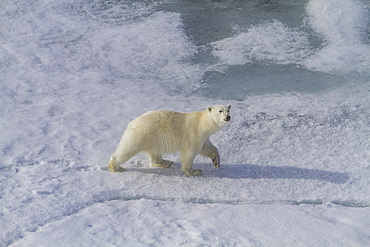
A curious young polar bear (Ursus maritimus), approaches the ship on Spitsbergen in the Svalbard Archipelago, Norway
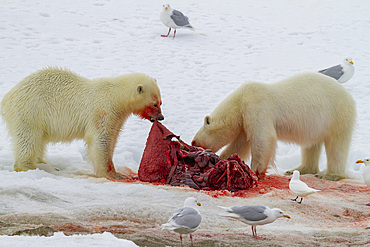
Two young polar bears (Ursus maritimus), feeding side-by-side on a fresh bearded seal kill on Spitsbergen, Svalbard, Norway
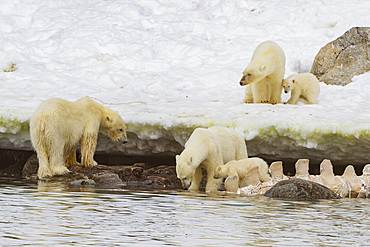
Two mother polar bears (Ursus maritimus) with cubs of the year watch a male bear feeding on a fin whale carcass in Svalbard, Norway
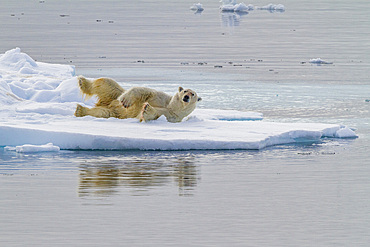
Adult polar bear (Ursus maritimus), on multi-year ice floes off the coast of Edgeoya, Svalbard, Norway
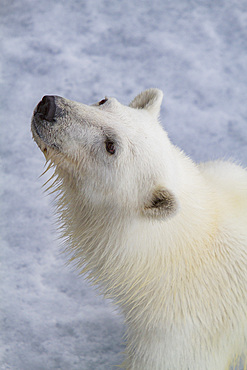
Young curious female polar bear (Ursus maritimus), on fast ice near Hinlopen Strait in the Svalbard Archipelago, Norway
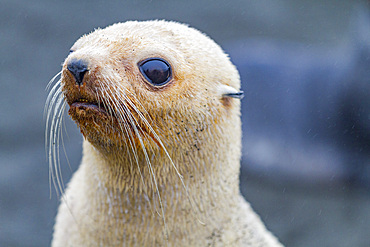
Leucistic caused by lack of melanin, or blond Antarctic fur seal pup (Arctocephalus gazella) on South Georgia, Southern Ocean, Polar Regions

Chinstrap penguin (Pygoscelis antarctica) molting at Baily Head on Deception Island, Antarctica, Southern Ocean, Polar Regions
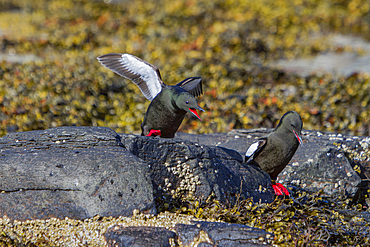
Adult black guillemot (Cepphus grylle) in summer plumage near Vigur Island in Isafjardardjup Bay, Iceland
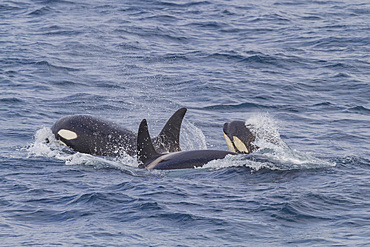
Group of at least eight killer whales (Orcinus orca) surfacing off the coast of the island of Surtsey, southern Iceland
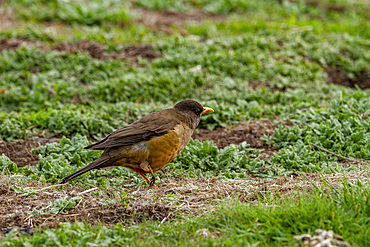
Adult austral thrush (Turdus falklandii falklandii), with cleanly broken right leg on Carcass Island in the Falkland Islands, South America
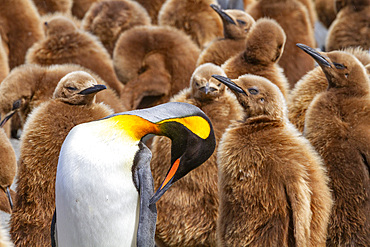
Adult king penguin (Aptenodytes patagonicus) amongst chicks at breeding colony at Gold Harbour, South Georgia Island, Polar Regions

Adelie penguins (Pygoscelis adeliae), at breeding colony at Brown Bluff on the eastern side of the Antarctic Peninsula, Antarctica, Polar Regions
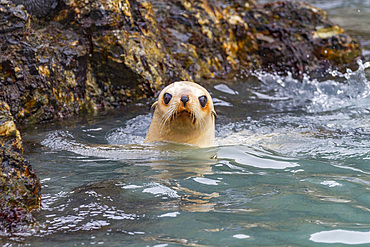
Leucistic caused by lack of melanin, or blond Antarctic fur seal pup (Arctocephalus gazella) on South Georgia, Polar Regions

Research assistants and technicians from the University of Ghana collect dust samples from the living rooms and bedrooms of children in Accra, Ghana. The samples will be analyzed for the presence of dust mites, fungus', and animal allergens to help researchers better understand why children in wealthier homes have higher rates of allergies and asthma than poorer children. The leading theory is that higher rates of helminth (parasite) infections among poorer children are affecting the immune system in a way that offers protection from allergies and asthma. The study aims to find out what the worms are doing, isolate the beneficial effect and replicate it.
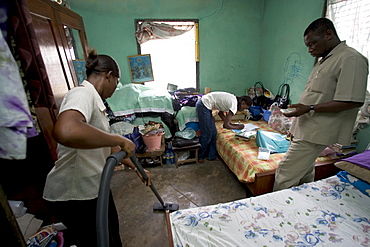
Research assistants and technicians from the University of Ghana collect dust samples from the living rooms and bedrooms of children in Accra, Ghana. The samples will be analyzed for the presence of dust mites, fungus', and animal allergens to help researchers better understand why children in wealthier homes have higher rates of allergies and asthma than poorer children. The leading theory is that higher rates of helminth (parasite) infections among poorer children are affecting the immune system in a way that offers protection from allergies and asthma. The study aims to find out what the worms are doing, isolate the beneficial effect and replicate it.

Research assistants and technicians from the University of Ghana collect dust samples from the living rooms and bedrooms of children in Accra, Ghana. The samples will be analyzed for the presence of dust mites, fungus', and animal allergens to help researchers better understand why children in wealthier homes have higher rates of allergies and asthma than poorer children. The leading theory is that higher rates of helminth (parasite) infections among poorer children are affecting the immune system in a way that offers protection from allergies and asthma. The study aims to find out what the worms are doing, isolate the beneficial effect and replicate it.
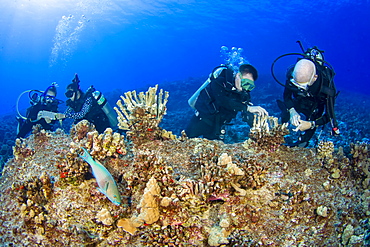
Research divers from the MOC Marine Institute glue broken coral heads back together and map out coral damage at Molokini Marine Preserve off the island of Maui, Hawaii. In the future, data from here will help to determine the health of Hawaii's reefs, Maui, Hawaii, United States of America
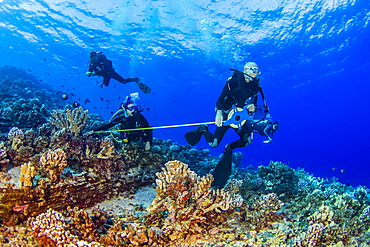
Research divers from the MOC Marine Institute map out coral damage at Molokini Marine Preserve off the island of Maui, Hawaii. In the future, data from here will help to determine the health of Hawaii's reefs, Maui, Hawaii, United States of America
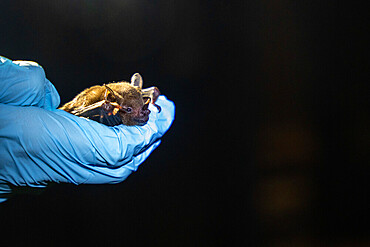
Sowell's short-tailed bat (Carollia sowelli) caught as part of a pollination study, rainforest at the "La Selva" research station in Puerto Viejo de Sarapiqui, Costa Rica

Sowell's short-tailed bat (Carollia sowelli) caught as part of a pollination study, rainforest at the "La Selva" research station in Puerto Viejo de Sarapiqui, Costa Rica
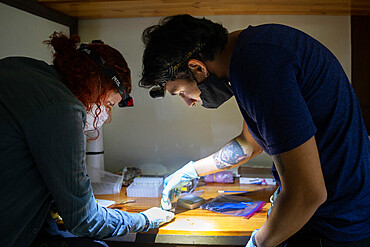
Researchers applying tape to the hairs of a bat to test methods to capture the pollen it carries as part of a pollination study, rainforest at the 'La Selva' research station in Puerto Viejo de Sarapiqui, Costa Rica

Researchers applying a mascara brush to the hairs of a Sowell's short-tailed bat (Carollia sowelli) to test methods to capture pollen that bats may carry as part of a pollination study, rainforest at the "La Selva" research station in Puerto Viejo de Sarapiqui, Costa Rica
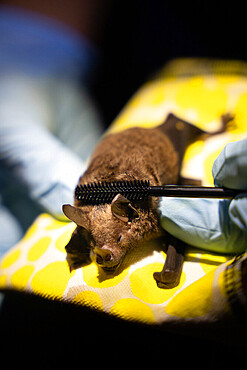
Researchers applying a mascara brush to the hairs of a Sowell's short-tailed bat (Carollia sowelli) to test methods to capture pollen that bats may carry as part of a pollination study, rainforest at the "La Selva" research station in Puerto Viejo de Sarapiqui, Costa Rica
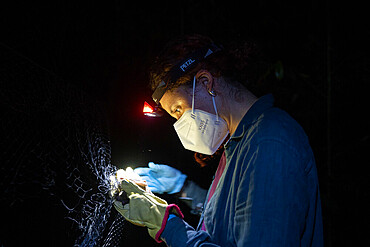
Researcher unhooking a bat caught in a net as part of a pollination study, rainforest at the "La Selva" research station in Puerto Viejo de Sarapiqui, Costa Rica

Bat caught in a net as part of a pollination study, rainforest at the "La Selva" research station in Puerto Viejo de Sarapiqui, Costa Rica
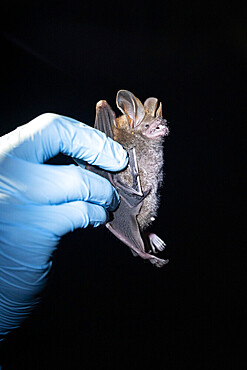
Fringe-lipped Bat (Trachops cirrhosus) in the hand of a scientist as part of a pollination study, tropical forest at the "La Selva" research station in Puerto Viejo de Sarapiqui, Costa Rica
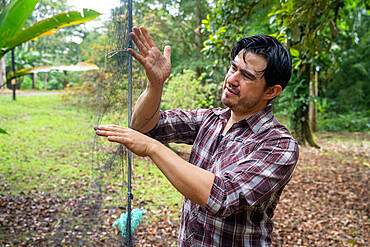
Researcher setting up a net to capture hummingbirds as part of a pollination study, rainforest at the "La Selva" research station in Puerto Viejo de Sarapiqui, Costa Rica
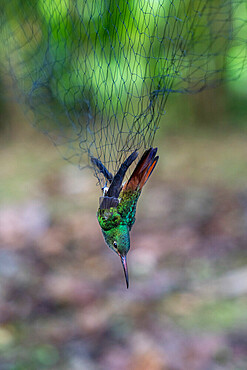
Rufous-tailed Hummingbird (Amazilia tzacatl) in a net set up by a researcher as part of a pollination study, rainforest at the "La Selva" research station in Puerto Viejo de Sarapiqui, Costa Rica
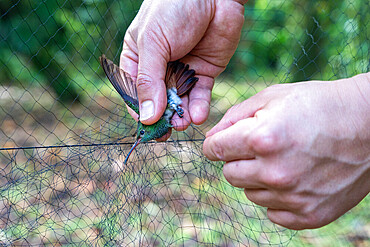
Researcher catching Rufous-tailed Hummingbird (Amazilia Tzacatl) in a net set up for pollination study, rainforest at "La Selva" research station in Puerto Viejo de Sarapiqui, Costa Rica

Researchers picking up pollen using tape on the beak of a Rufous-tailed hummingbird as part of a pollination study, rainforest at the "La Selva" research station in Puerto Viejo de Sarapiqui, Costa Rica
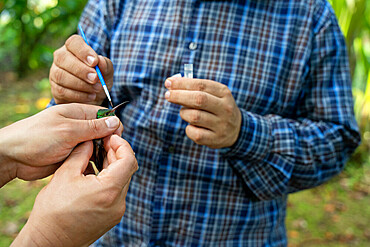
Researchers picking up pollen with a brush from the beak of a Rufous-tailed hummingbird as part of a pollination study, rainforest at the "La Selva" research station in Puerto Viejo de Sarapiqui , Costa Rica
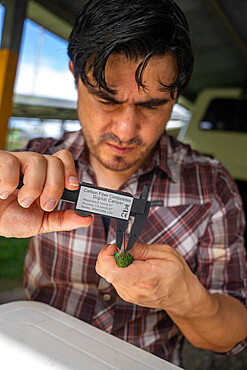
Researcher measuring the beak of a Rufous-tailed hummingbird as part of a pollination study, rainforest at the "La Selva" research station in Puerto Viejo de Sarapiqui, Costa Rica
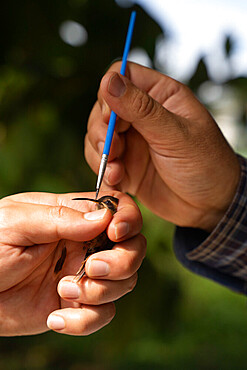
Researchers picking up pollen with a brush from the beak of a hummingbird Stripe-throated Hermit as part of a pollination study, rainforest at the "La Selva" research station in Puerto Viejo de Sarapiqui, Costa Rica
